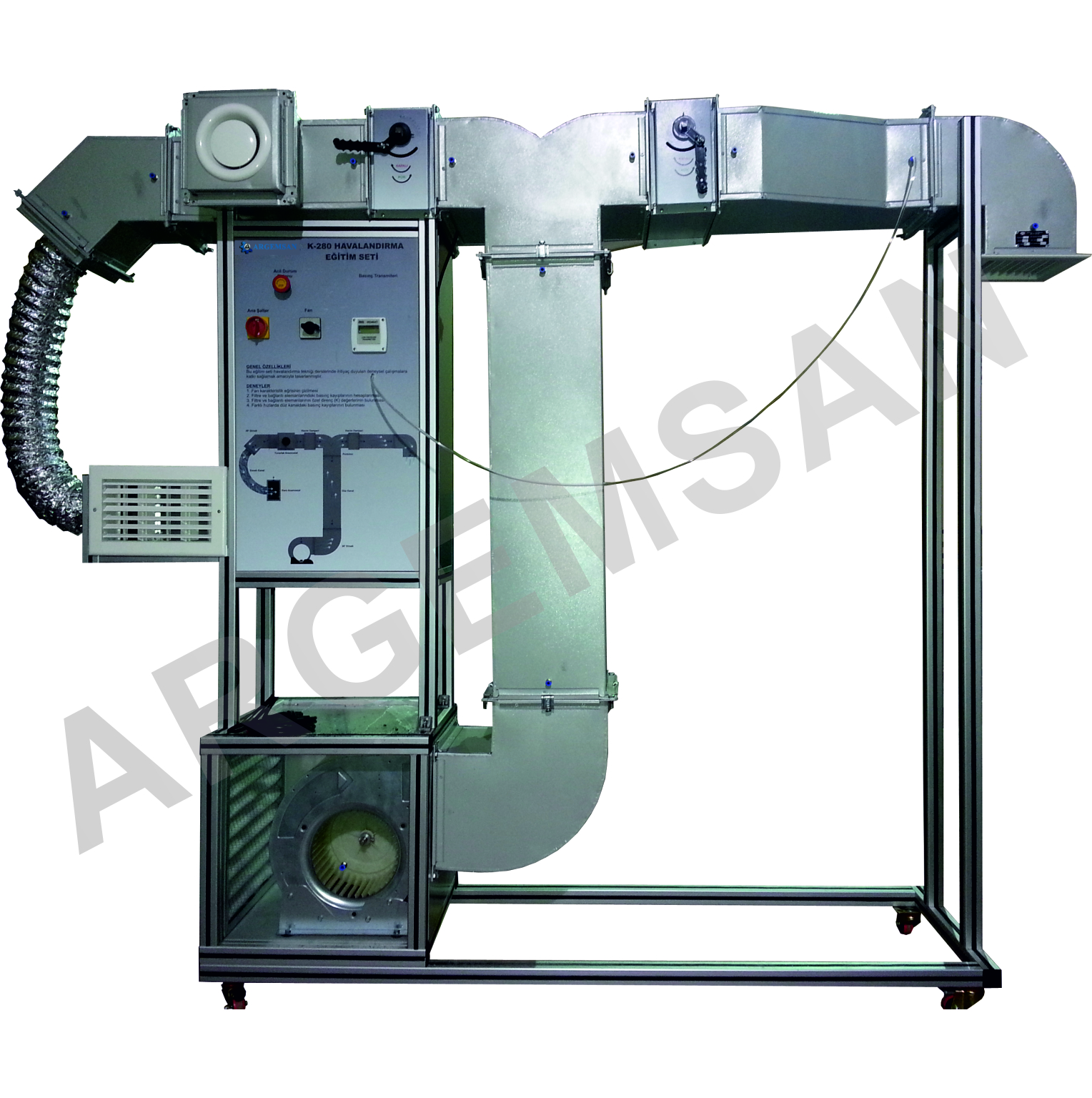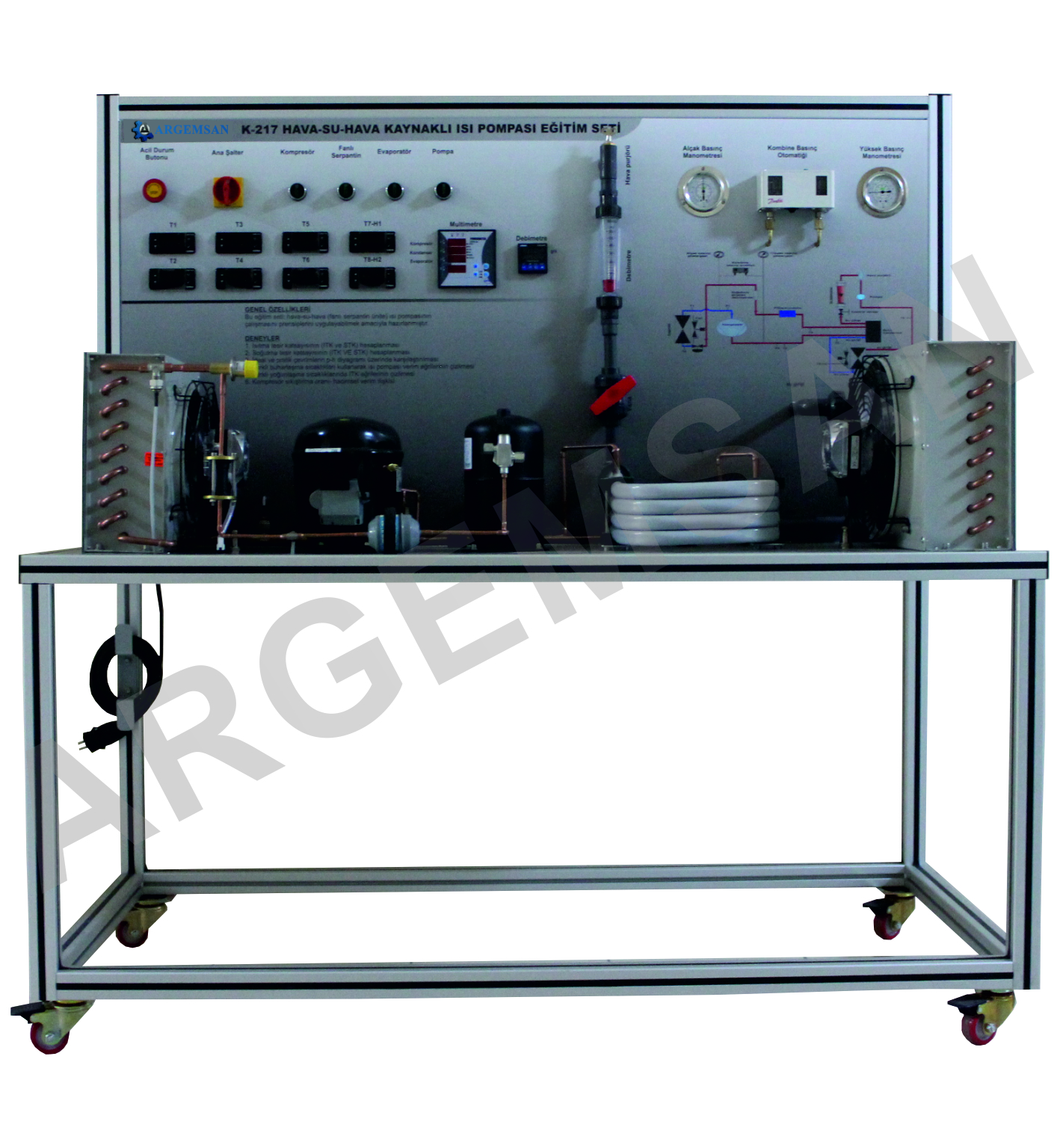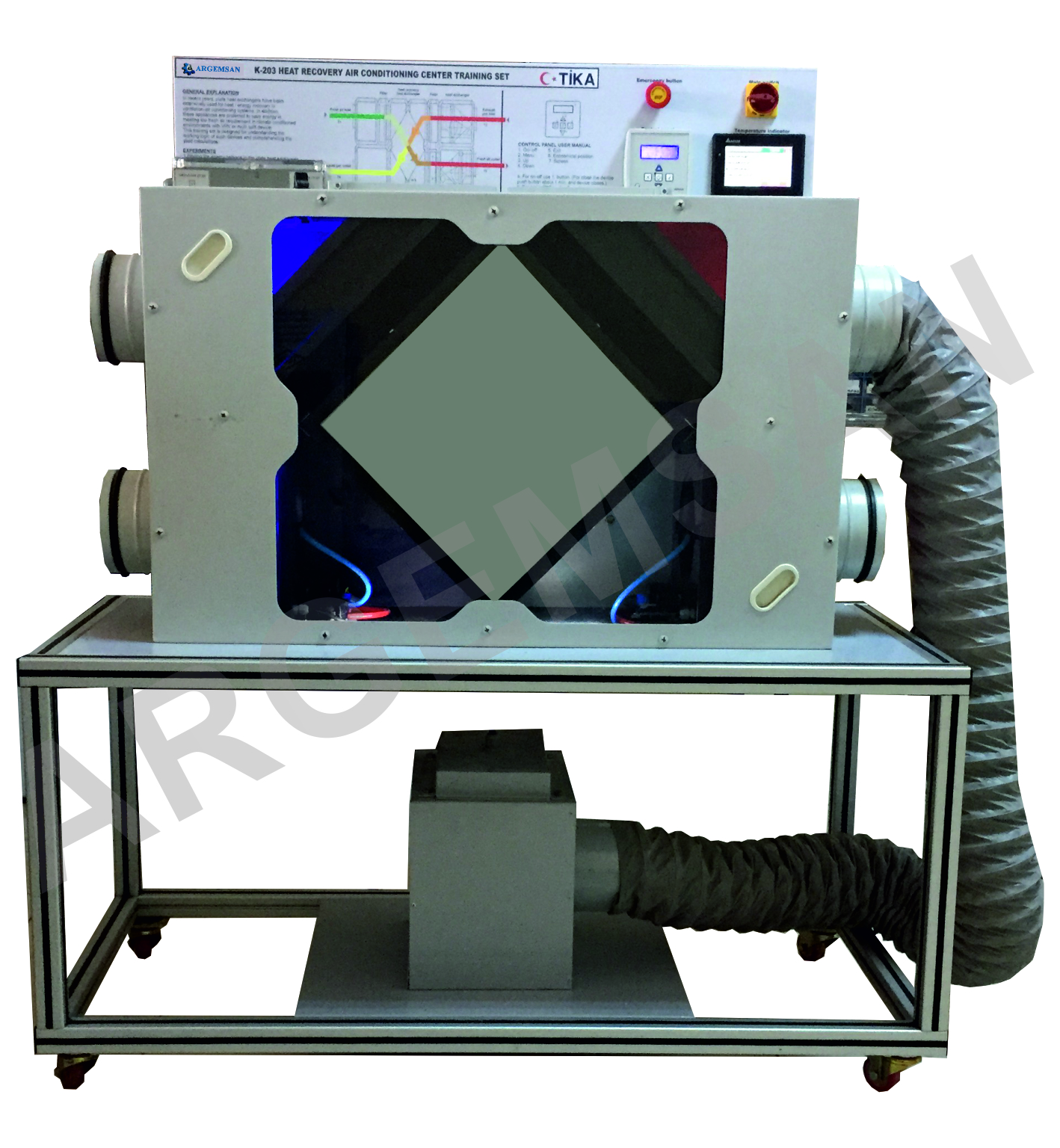Genel Bakış
Bu eğitim seti split klimaların temel işlevlerini ve elemanlarını deneysel olarak göstermek amacıyla tasarlanmıştır.
Çalışma Prensibi
Klimanın çalışma yöntemi, belirli bir basınç altında bulunan sıvı haldeki akışkanın istenilen sıcaklıkta buharlaştırılması ve buhar halden tekrar sıvı hale döndürülmesidir. Sıvı haldeki materyale basınçla birlikte ısı emdirilerek gaz faza dönüştürülür, bu işleme faz değişimi de denir. Çevrim malzemesi olarak kullanılan gaz bir kompresör aracılığıyla emilip sıkıştırılarak sıvılaştırılır. Çalışma prensibini termoidinamiğin ikinci kanunu açıklar. Klimalarda kullanılan özel kimyasal bileşikler sayesinde buharlaşma sağlanarak bu faz dönüşümünün özelliğinden yararlanılır. Kapalı bir bobin sistemi ile buharlaşan akışkan tekrar yoğunlaştırılarak bir döngü oluşturulur. İlgili bileşiklerde bunların nispeten düşük sıcaklıklarda değiştirme özelliklerine sahip soğutucu vardır. Klimalar aynı zamanda soğutucu bobinler üzerinde sıcak havayı hareket ettiren fanlar içerir. Sıcak hava soğutucunun üzerinden akarken düşük basınçlı evaporatör bobinleri soğutucu içindeki ısıyı absorbe eder ve sıvıdan gaza geçiş gözlenir. Soğutmayı verimli tutmak için klima, soğutucu gazı tekrar sıvı faza çevirir. Bunu yapmak için yüksek basınç altında kompresöre gaz koyulur ve işlem istenmeyen ısı meydana getirir. Gazın sıkıştırılması ile oluşturulan tüm ekstra ısı ardından kondansatör rulo olarak adlandırılan ikinci bir bobin grubu ve bir ikinci fan yardımıyla açık havada boşaltılır. Gaz soğur, bir sıvıya geri döner ve süreç yeniden başlar.GENERAL EXPLANATION
This training set is designed to experimentally show the basic functions and elements of split air conditioners.
TECHNICAL SPECIFICATION
The working method of the air conditioner is to vaporize the fluid under a certain pressure at the desired temperature and to return it to the liquid state again in the vapor state. The liquid material is transformed into gas phase by absorbing heat with pressure, also called phase change. The gas used as the cycle material is absorbed and compressed by means of a compressor and liquefied. The working principle describes the second law of thermodynamics. Thanks to the special chemical compounds used in the climate, this phase transformation property is utilized by providing evaporation. A closed loop system is used to re-condense the evaporated fluid to form a loop. In the related compounds, there are refrigerants which have modifying properties at relatively low temperatures. The air conditioners also include fans that move hot air over the cooling coils. As the hot air flows over the cooler, the low-pressure evaporator coils absorb heat from the coolant and gaseous transition from the liquid is observed. To keep the cooling efficient, the air conditioner turns the refrigerant back into a liquid. To do this, under high pressure, the compressor gas is introduced and the process brings undesirable heat to the well. All the extra heat generated by the compression of the gas is then discharged in the open air by means of a second coil group and a second fan, called capacitor rolls. The gas cools down, returns to a liquid and the process starts again.




